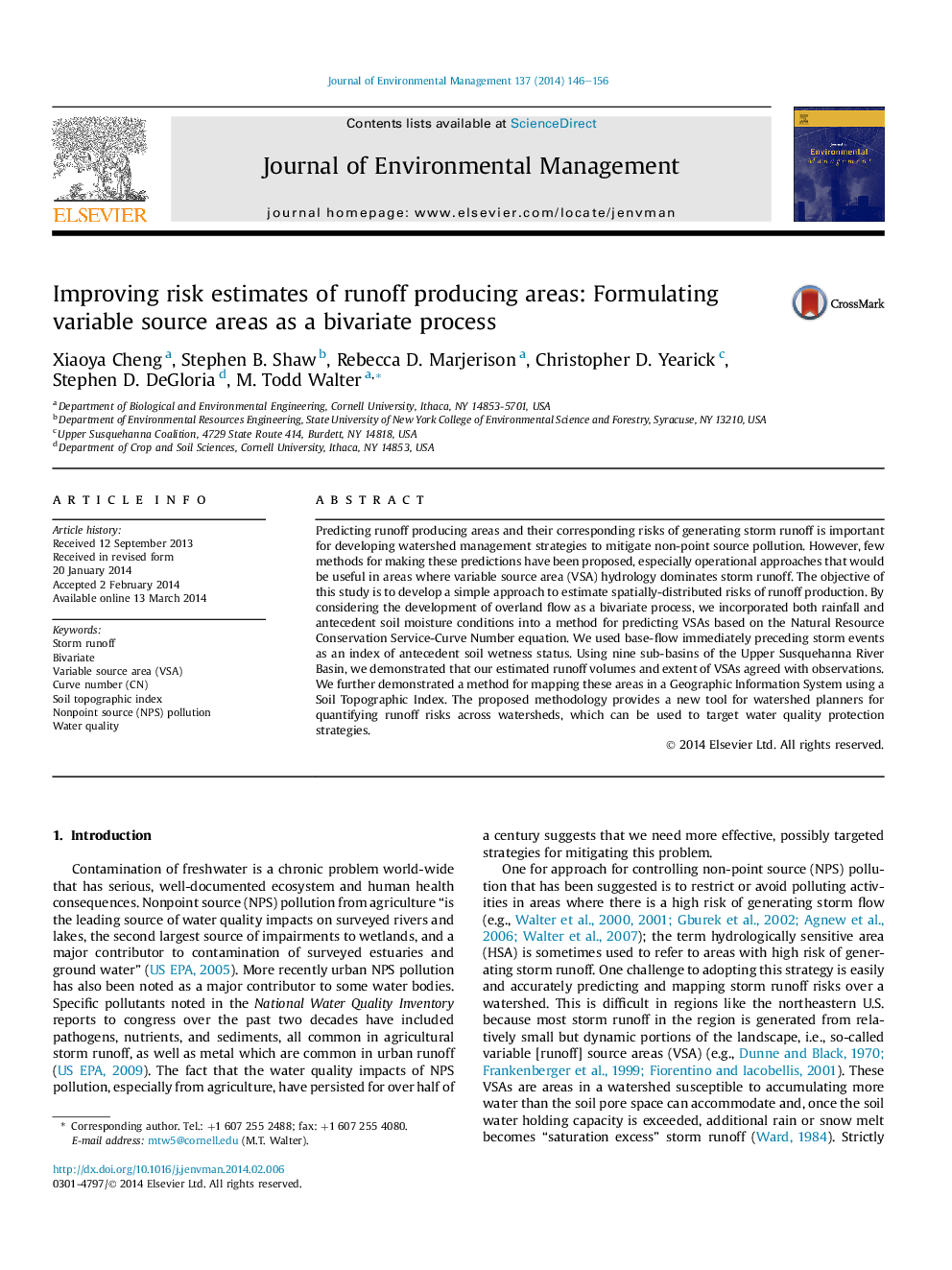| Article ID | Journal | Published Year | Pages | File Type |
|---|---|---|---|---|
| 1055737 | Journal of Environmental Management | 2014 | 11 Pages |
•A method is developed to estimate the risk of generating saturation excess storm runoff.•The method considers both the exceedence probabilities of rainfall and soil moisture status.•The storm runoff risks can mapped onto a landscape using topographic wetness indices.•Mapped runoff risks can help target management strategies for mitigating NPS pollution.
Predicting runoff producing areas and their corresponding risks of generating storm runoff is important for developing watershed management strategies to mitigate non-point source pollution. However, few methods for making these predictions have been proposed, especially operational approaches that would be useful in areas where variable source area (VSA) hydrology dominates storm runoff. The objective of this study is to develop a simple approach to estimate spatially-distributed risks of runoff production. By considering the development of overland flow as a bivariate process, we incorporated both rainfall and antecedent soil moisture conditions into a method for predicting VSAs based on the Natural Resource Conservation Service-Curve Number equation. We used base-flow immediately preceding storm events as an index of antecedent soil wetness status. Using nine sub-basins of the Upper Susquehanna River Basin, we demonstrated that our estimated runoff volumes and extent of VSAs agreed with observations. We further demonstrated a method for mapping these areas in a Geographic Information System using a Soil Topographic Index. The proposed methodology provides a new tool for watershed planners for quantifying runoff risks across watersheds, which can be used to target water quality protection strategies.
